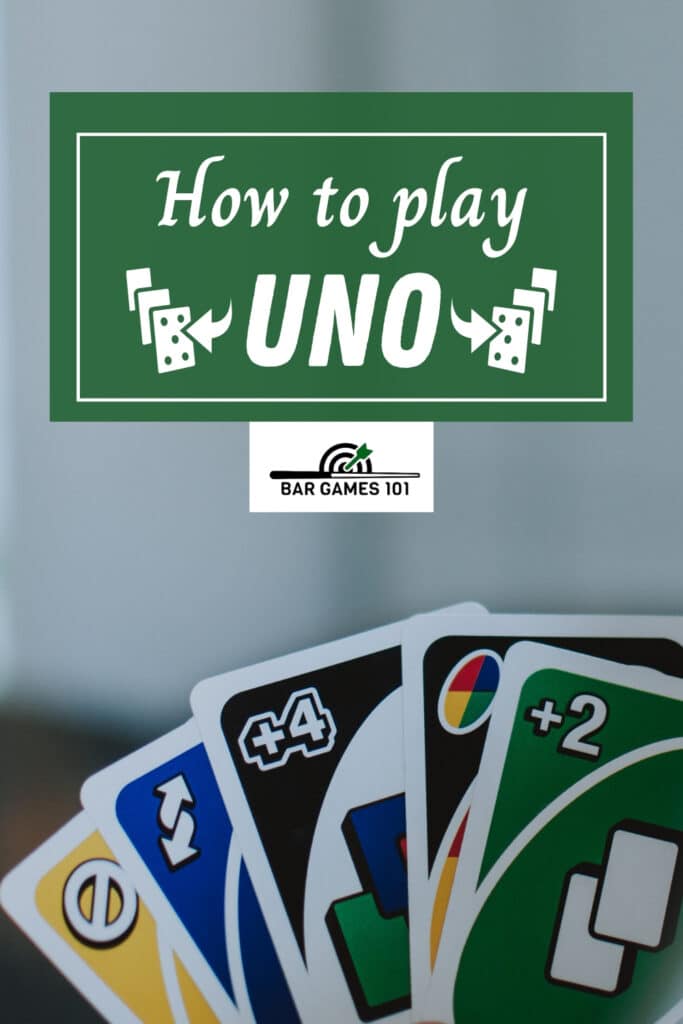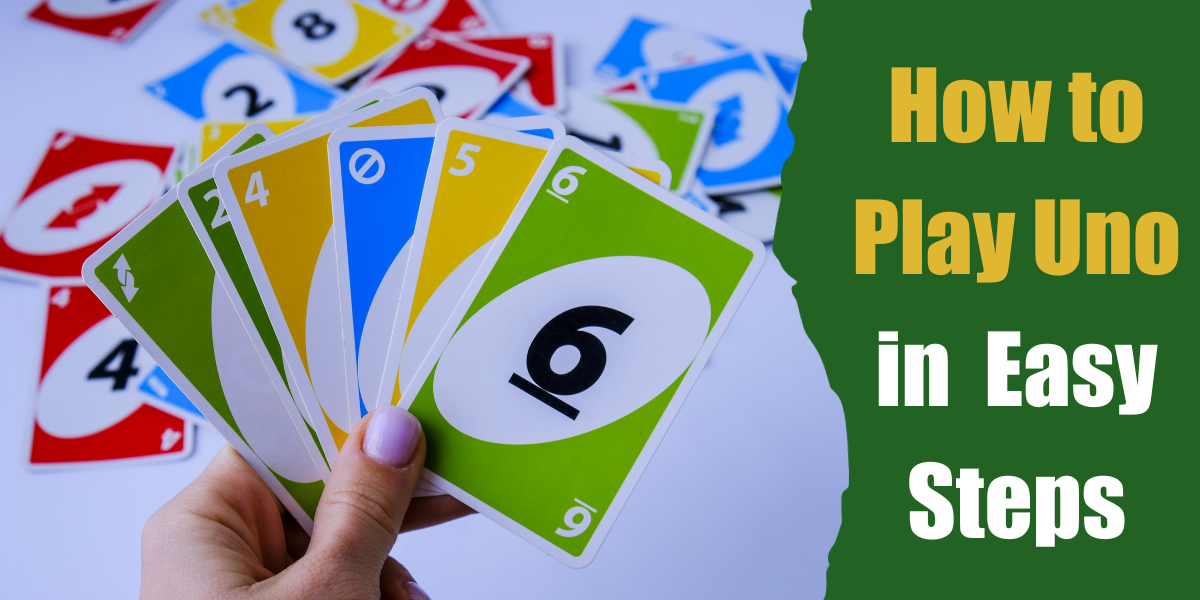Learn how to play Uno with 5 easy steps, along with an overview of set-up instructions and action cards for this classic card game.
Card games offer a fantastic ice breaker for parties and all-around get-together fun for friends and family.
Uno is a classic game that most people have played at some point in their lives.
Uno is fun, simple, and great fun for the whole family.
If you’re not sure how to play Uno or you haven’t played in a long time, you can learn how to play right here.
Starting Uno: Setup and Turn Rotations
Before diving into Uno Rules, it is essential that you learn how to set up the game.
Each player must be dealt seven cards face-down.
Place all of the remaining cards face-down to form a draw pile.
Next, take the top card from the draw pile and place it face-up nearby to begin the discard pile.
With both the draw and discard piles in place, you are ready to begin.
Generally, the player to the dealer’s left will go first.
However, you may also choose a player to begin or select the youngest player, oldest player, etc.
This card game has a clockwise turn rotation.
After the first player has finished their turn, the player to their left will begin theirs.
How to Play Uno: 5 Steps


It’s easy to learn how to play Uno. Uno is a simple, entertaining card game that has become a classic over the years.
When playing Uno, your goal will be to rid yourself of your cards as quickly and efficiently as possible.
The only way to score points and ultimately win the game is by being the first player to run out of cards.
To do this, you will need to play cards from your hand to match the number, color, or the action of the top card in the discard pile.
You may also play a wild card to alter the color that is currently in play.
1. Taking Your Turn as the First Player
While each turn playing Uno progresses in relatively the same fashion, the first turn comes with a critical difference.
At the start of your turn, you must look at the face-up card that is on the top of the discard pile.
If this card is an action card, you must carry out the action.
For example, if a Skip card is in play, your turn will be skipped.
If a reverse card is in play, you will play your turn as usual, but then the game will begin to progress counter-clockwise instead of clockwise. So, the player to your right will be the second player (counter-clockwise), rather than the player to your left (clockwise).
The only exception to this rule is if the starting card in the discard pile is a wild or a wild, draw four card.
If the face-up card is a wild, you can choose the color the round begins with.
If you choose a wild, draw four card, put the card back in the draw pile.
Once you have reshuffled the deck, you may turn over a new card for the discard pile.
2. Taking a Turn in General
At the start of your turn, you must adhere to the top card in the discard pile. If this card is an action card, you must play out the action.
Action cards aside, you must play a card that matches the card in the discard pile in either number, color, or action.
Alternatively, you can play a Wild card to alter the color that is currently in play.
You may only play one card each turn.
If you do not have a card that can be played, you must draw a new card from the draw pile.
You may play the card that you draw if that card can be played.
If the card cannot be played, keep it and end your turn.
3. Calling out “Uno!”
When you only have one remaining card left in your hand, you must call out the word “Uno!” This is kind of important.
While you can still win the game without saying “Uno,” you will risk a penalty if caught.
If someone catches you not saying “Uno” after your turn, the next player can call you out on your failure to declare that you only have one card left.
Should this occur, you must draw two more cards as a penalty.
To reiterate: You must say “Uno” each time that you are only left with one card.
4. Replenishing the Draw Pile
Should you run out of cards in the draw pile during a round, you must shuffle the discard pile to begin anew.
After you have shuffled, turn over the top card on the draw pile to create the new discard pile.
The next player must abide by the new color or number to follow or adhere to any action card.
5. Finishing a Round and Winning the Game
Once a player has played all of their cards and has no cards remaining, the game round is completed. Points are calculated based upon the remaining cards that are in the hands of the other players.
Action cards are scored as the following:
- Wild or a Wild Draw Four — 50 points.
- Wild Swap Hands or a Wild Customizable — 40 points.
- Draw Two, Reverse, a Skip card — 20 points.
All numbered cards retain their numbered value. 9 is worth 9 points. A 5 is worth 5 points, and so on.
Generally, the first player to obtain 500 points will win the game.
However, players can set a specified amount of points or time before the game begins to determine the winner.
If a round ends without a winner, a new Uno round will begin.
Keep track of each player’s points to determine who ultimately wins the game of Uno.
Uno Action Cards

Uno consists of numbered cards that have been printed in varying colors.
Additionally, action cards give the game more flare.
These cards create the unexpected and change the way the game is played.
Uno consists of the following action cards:
- Reverse: Once played, the turn rotation of the round is reversed. If turns were progressing clockwise, a reverse card will change the round to a counter-clockwise progression and so on. The Reverse can only be played on a card with a matching color.
- Skip: If you play a Skip card, the next player must skip their turn. Skip can only be played on a card with a matching color.
- Draw Two: When played, the next player must pick up two cards and lose his or her turn. Draw Two can only be played on a card that matches its color or on another Draw Two.
- Wild: When played, the player who set the card down can state which color will be represented. This change will take effect on the next player’s turn. The next player may then play any card of that declared color. Wild can be played at any point in the game.
- Wild Draw Four: This card works the same way that Wild does, but also requires the next player to draw four cards. You may only play this card if you have no other alternative cards that can be played. If another player suspects that you had an alternative card, you must show him or her your hand. If you did have an alternative, you must draw 4 cards as a penalty. If you did not have an alternative card, the accusing player must draw 6 cards.
Mastering Uno Rules and Enjoying the Game
Whether you’re new to Uno or returning to this classic game, Uno is an entertaining game you’re sure to enjoy.
Several versions have been produced over the years, and now Uno can be found online, on mobile devices and even on gaming consoles.
What’s your favorite way to play Uno?


